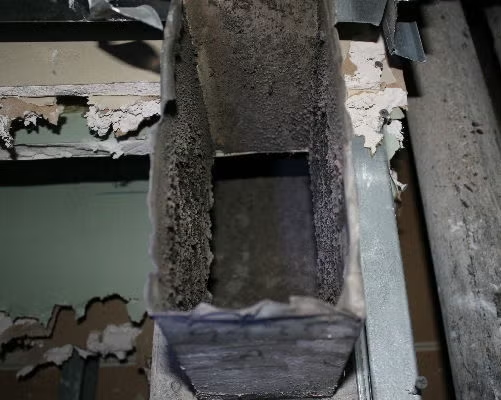How To Clean Mold From Heat Pump
Mold: A Common HVAC Complaint That Is Easy To Deal With
 The presence of mold in an HVAC system is a common complaint. Mold is a sneaky little bugger. It can grow and proliferate and make building occupants sick without ever being seen, and dramatically reduce indoor air quality (IAQ). And the fastest way to spread mold through a building is through a forced-air HVAC system. If you are an HVAC professional, consider checking out our six steps to removing mold in HVAC systems article.
The presence of mold in an HVAC system is a common complaint. Mold is a sneaky little bugger. It can grow and proliferate and make building occupants sick without ever being seen, and dramatically reduce indoor air quality (IAQ). And the fastest way to spread mold through a building is through a forced-air HVAC system. If you are an HVAC professional, consider checking out our six steps to removing mold in HVAC systems article.
The reason this complaint is so common is that mold is always present in your buildings and your HVAC system to the extent that it is present in your building's environment. There will be more mold in humid weather and less in dry weather. You will never get rid of it completely, but you can control it. All it needs to grow is moisture and food – take those away and the mold goes away.
According to the U.S. EPA, you should routinely inspect your HVAC systems, not just for mold, but for moisture. Look at drain and condensate pans to make sure they are draining properly. If they are clogged, the moisture that accumulates will become a mold factory. Also make sure that all HVAC ducts and system components such as air handlers, blowers, plenums, and the like are free of any moisture.
How to Get Rid of Mold
Despite regularly inspecting your system, you are still getting complaints about it (mold starts to grow in as little as 48 hours), here are some tips you can share with your HVAC contractor for cleaning it up:
- Turn off your HVAC system.
- Everyone involved in this cleaning should wear at least an N-95 respirator
- Replace anything porous, such as filters or insulation that has become wet. Double-bag the waste using 6-mil or thicker plastic bags.
- Use wet vacuums to clean out any standing water.
- Use an EPA registered disinfectant labeled for HVAC use to clean non-porous surfaces (Ductwork, coils, plenums, pans, etc) of mold, mildew, and other dirt. BIOSPRAY-TOWER ready-to-use disinfectant and mold cleaner will kill and remove mold, mildew, and odor-causing bacteria.
- Clean the HVAC evaporator coils using a mechanical coil cleaning system to remove any solid debris.
- As an added measure, isolate each section of ductwork you clean with bladders so the spores you stir up during cleaning don't spread to other parts of the system or the building. Fog the area with an EPA-registered disinfectant.
- Apply a mold and mildew inhibitor to all components of the HVAC systems. Again, this must be EPA registered and specifically labeled for use in HVAC systems to limit risks associated with using the wrong chemicals and cleaners in HVAC systems. BBJ Mold Control is EPA registered for use in HVAC systems to control mold growth for up to 2 years.
- As a final step, HEPA vacuum anything that you cleaned up.
Check out these other resources:
- For a more complete look at mold visit EPA.gov/mold. You'll learn more than you EVER wanted to know about mold.
- Check out our learning center on how best to maintain your facility's existing cooling tower.
- Subscribe to our blog to stay informed on the latest HVAC maintenance news and insight.
- Work smarter by using inspection and test equipment to better understand system performance and efficiency.
- Stay up to date on facility maintenance tools such as chiller tube cleaners, boiler tube cleaners, hose/pipe cleaners, descaler systems, industrial vacuums, commercial pressure washers, and drain cleaners.
How To Clean Mold From Heat Pump
Source: https://www.goodway.com/hvac-blog/2009/10/mold-a-common-hvac-complaint-that-is-easy-to-deal-with/
Posted by: kellywalway.blogspot.com

0 Response to "How To Clean Mold From Heat Pump"
Post a Comment